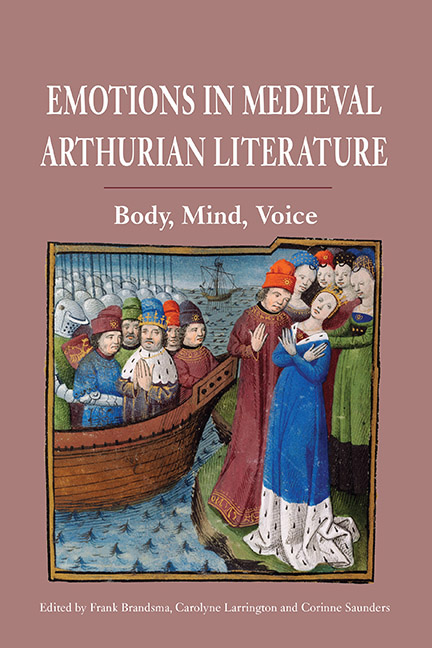7 - Mourning Gawein: Cognition and Affect in Diu Crône and Some French Gauvain-Texts
Published online by Cambridge University Press: 21 May 2021
Summary
In Heinrich von dem Türlin's romance Diu Crône, dated to the early thirteenth century and composed in Austria, the knight Gigamec rides to Arthur's court with the head of Gawein's physical double, Aamanz, whom he has just slain. His claim to have killed Arthur's most eminent knight provokes a series of emotional displays and utterances from Keii, from Arthur, from Gawein's wife, Amurfina, and from the rest of the court. Heinrich's audience, however, knows that Gawein is alive and well and is on a quest elsewhere, as the narrator has related the death of Aamanz and thus accounted for the deception in advance. This essay investigates this elaborate scene of mourning and its function within a highly complex Arthurian text. It will also consider two other episodes in contemporary French romances – Le Chevalier aux Deux Épées and L’Atre Périlleux – in which Gawain is falsely believed to be dead: the ‘Gawain als Scheintoter’ (Gawain as apparently dead) topos.
At the most fundamental level, texts depict the emotions of characters as responses to the vicissitudes and successes that they experience in pursuit of their goals within the plot. Psychologists (in particular, Keith Oatley, Ed Tan and T. J. Scheff) have analysed literary emotion episodes as producing identificatory or empathetic emotion in their audiences or as triggering autobiographical memories of similar emotion. Literary texts can contain mimetic simulations of real-world emotion scripts: the events represented in literary texts are those which produce emotion in real life, and hence the running of the simulation within the text evokes emotions in the audience or reader. Emotional engagement with the mourning emotions and behaviour in Diu Crône on the part of its audience may thus be predicted. But what happens when, as is the case in Diu Crône and the two French romances that are discussed below, the audience knows from the outset that Gawein/Gauvain is not dead at all? In these cases the ‘mirror characters’, as Frank Brandsma terms them, encourage an audience response which, although socially congruent with the situation within the text, is at odds with the audience's cognitive assessment of the episode. This calls for, as I shall argue below, a different audience understanding and response than is produced by other episodes of high emotion.
- Type
- Chapter
- Information
- Emotions in Medieval Arthurian LiteratureBody, Mind, Voice, pp. 123 - 142Publisher: Boydell & BrewerPrint publication year: 2015



